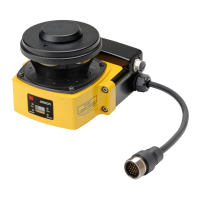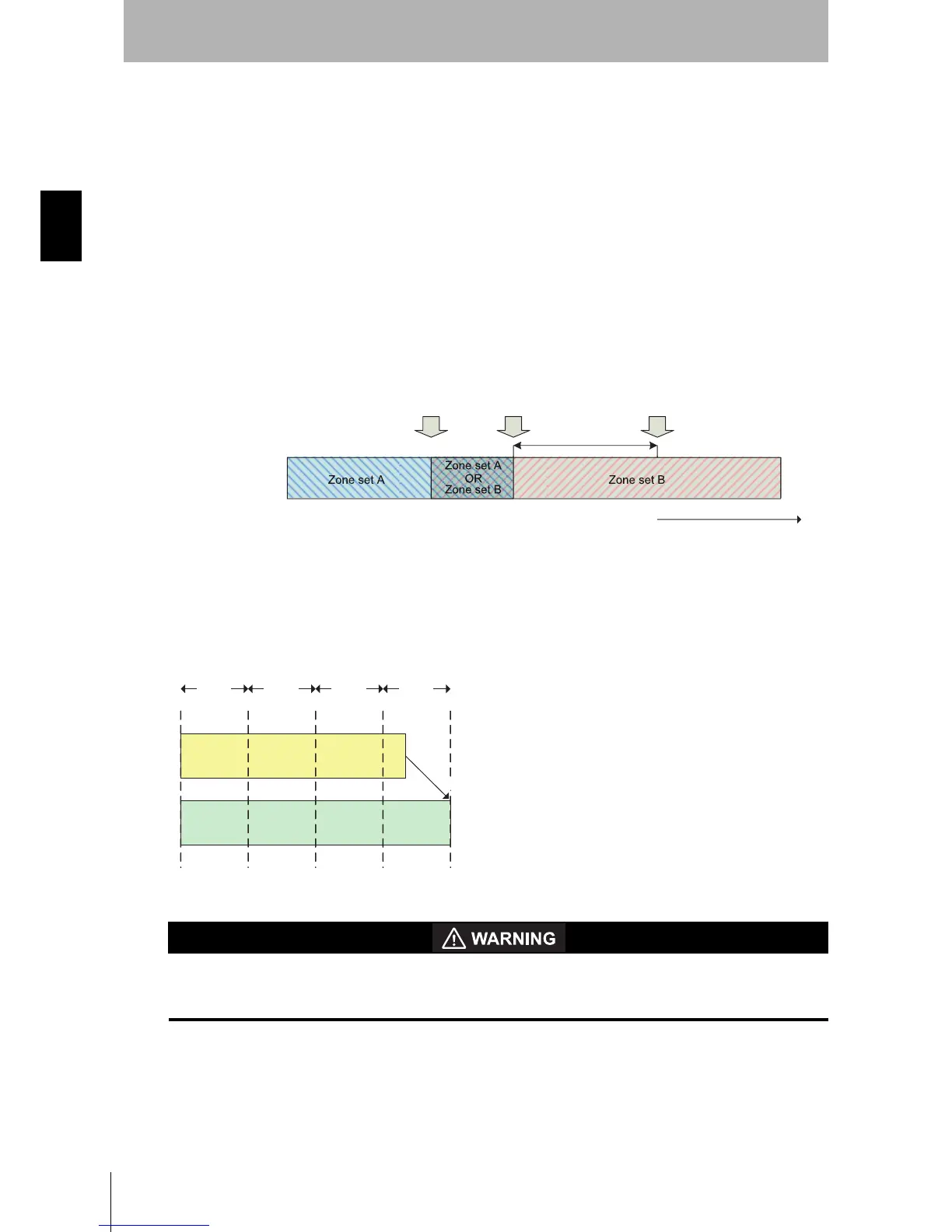26
Chapter2
OS32C
User’s Manual
Operating States & Output Modes
2) Zone Set Select Input Switch Timing - The worst case time it can take for switching zone set
select inputs. This time starts on the transition on the first input change and ends to the transition
on the last input change, this will be defined as T
switches.
3) Zone Set Select Input Switch Tolerance - It is required that the zone set select input switching
circuitry begin switching the zone set inputs at a precise time relative to when the zone set
transition is desired to occur. The tolerance of timing when input state is actually switched,
generated by input switching circuitry, will be defined using +/- T
tol.
The simplest monitoring zone set switching timing in an installation is t
EndZoneA < tStartZoneB. In this case,
the interval between t
EndZoneA and tEndZoneA does not require any monitoring, thus switching from zone
set A to zone set B is straightforward. But when t
EndZoneA = tStartZoneB or tEndZoneA > tStartZoneB, both zone set
A and zone set B may need to be monitored simultaneously. In such case, refer to How to Guarantee
Protection of Original Zone Set.
Fig. 2-8 Switch from Zone set A to Zone set B.
The Zone Set Input Switch Timing must be configured to consider delay time of input switching circuitry
and ensure proper monitoring and safety. The configuration parameter Zone Set Switching Delay
(T
delay) needs a value larger than Tswitches in increments of 20 ms (Tsample). In the following example,
T
delay is configured to 80ms or more.
Fig. 2-9 Zone Delay configuration.
If an insufficient Zone Delay is used for the actual worst case zone set select input switching time of the
installation, an unintended zone set may be temporarily enabled, resulting in temporarily monitoring
the wrong zone.
Also, it must be ensured that after a zone switch there is a minimum "hold time" before the next zone
switch can take place. That time is 2 * T
sample.

